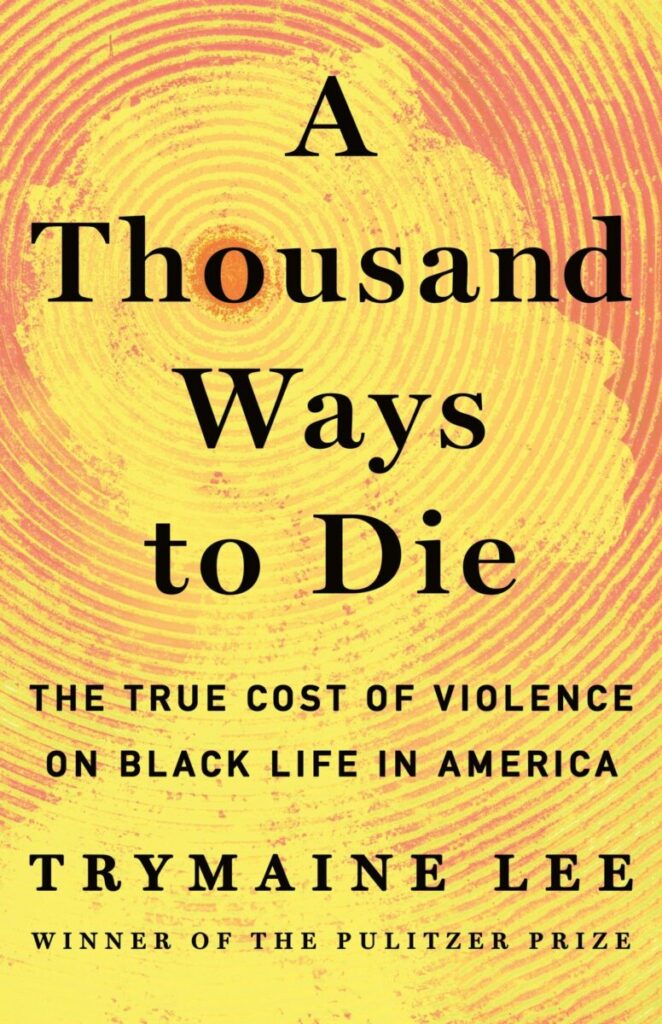By Terri Schlichenmeyer
Face it: some scores can never truly be settled.
You can try tit-for-tat, you can scheme and plan, but making things even? Not a chance; the other guy is probably scheming, too, so full pay-back ain’t happenin’. And besides, why let revenge live in your head? Life’s too short, you just can’t do it – and especially, as in the new book “A Thousand Ways to Die” by Trymaine Lee, you can’t do it with a gun.
Eight years ago, Trymaine Lee almost died.

Lee didn’t always know what to say.
“I struggle,” he says, “to answer why things are the way that they are, especially when it comes to Black folks like us.”
Death by violence happened in his own family: in 1923, a young great-uncle left on horseback to run an errand and was never seen alive again, which “ripped a hole in the family” that resonated for generations. Lynchings were common then, as was Jim Crow and so “Black folks… began leaving the South en masse…”
Guns, he says, were “central to the violence” then, on both sides.
Violence followed Black soldiers to Vietnam, and home again. It went to prison with some people, most often, men. Lee himself almost got in trouble once for a “twelve-dollar toy gun from Walmart” that looked realistic.
Black funeral directors learned how to hold open-casket funerals, as death stalked Black Americans for not learning to swim because Jim Crow kept them from it. Cancer caught others in unequal numbers. Some were wrapped up in “the deadly grind of the drug trade,” while “innocent victims [are] caught in the cross fire.”
“We still bleed,” he says. “… yet salvation from America’s violence has remained out of our grasp, like trying to put shape to the wind.”
On the surface, you may think there’s not much new to say about violence, when talking about Black life in general. In many ways, it’s been a part of American life for so long, it’s almost some sort of wrong-headed new normal. And yet, read “A Thousand Ways to Die” and your thinking is going to twist, and twist again in a whole new direction.
While author Trymaine Lee’s main focus is on gun violence in the past century or so, he diverts readers’ attention sometimes. Don’t forget this. Remember that. Here’s a story for you, here’s something else and as Lee totes them up, one by one, each point shows hidden costs attached to violent acts.
Readers will be hit hard by the fact that it’s a long list.
This is the kind of book that your mind will carry with you for days, and it begs to be shared and discussed. You owe it to your community, in fact, to talk about “A Thousand Ways to Die” because this powerful book scores.




